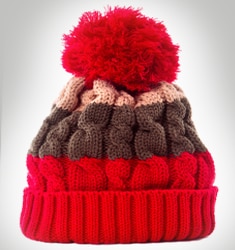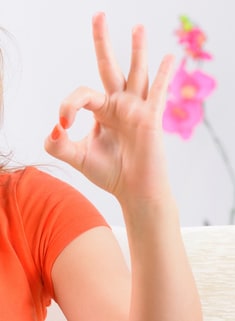Special Awareness Days
September 15th - Make a Hat Day

Ready to Order?
If you are ready to order, please contact Customer Service:
Telephone: 1 (800) 361-6128 Fax: 1 (800) 563-9196

Introduction
Hats are worn all over the world for a variety of reasons. They keep people warm in cold climates, they protect and warm up tiny babies, and they may be part of a costume, a religious practice, or a uniform. Hats can be worn by anyone and sometimes they are just simply FUN to wear!
Make a Hat Day was inspired by milliners (the term for a person who designs or makes hats) who recognized the opportunity to help people express their personalities by wearing hats of all colours, shapes and sizes.
Activity Bursts:
K-2 - The Arts
What kinds of hats have you seen? Do you have any hats? When do you wear them? Make and decorate a hat that makes you feel happy. Wear it to celebrate Make a Hat Day!
3-5 - History, Social Studies
Share these interesting facts with students:
Did you know?
- Tall white chef hats called toque blanche, traditionally have pleats that represent how many recipes a chef had mastered — so 100 pleats might represent a hundred ways an egg can be prepared. They were invented by cuisine inventors Marie-Antoine Carème and Auguste Escoffier as a method of establishing a chef’s level of experience in the kitchen. More info here.
- Queen Elizabeth I had a law requiring every person over 7 years of age to wear a cap on Sundays and holy days.
- Vikings never wore horned helmets. A highly popular German opera in the 1870’s included Norse characters costumed with this style of headgear and the image simply stuck.
- Colours of hard hats have meaning and are used both for safety and to distinguish roles on construction sites. The colour code differs from country to country or even within individual organizations, but there are some commonly seen standards. Usually, supervisors or engineers wear white hard hats, technical advisers wear blue, safety inspectors wear green, and labourers wear yellow. Orange or pink is reserved for new workers or visitors.
Set up a “Wear your favourite hat day!” You can involve the class, your grade level or even the whole school. Have a “Parade of Hats” around the school. Videotape the parade or take digital pictures to put on your school website. Remember to practise social distancing and safety protocols. You may consider doing this activity outside.
6-8 - The Arts, Creative Thinking, Media Literacy
Ask students: Do you wear hats? Why? When? (e.g., for sports, protection from weather, religious purposes, celebrations, etc.)
Explain that September 15th is Make a Hat Day. Share the information in the introduction or visit here.
Challenge students to design a hat. For inspiration, share the following website addresses here.
Here are some considerations:
- Who is the target group for your hat?
- Why did you select this target group?
- What special attributes or unique characteristics does your hat have that will attract your target group?
Have students create a drawing or other representation of their hat and prepare a 30-second ad to appeal to their target group. Share with the class.
Additional Ideas:
Grades K-2 – Art, Nutrition
Share the following quote from Janet Street-Porter: “Sometimes I've looked at a plate of food and wondered if it wouldn't look better as a hat.”
Ask students what they think it means.
Review what might be a healthy snack for kids their age (this site may help: https://www.healthline.com/nutrition/healthy-snacks-for-kids)
Alone, in pairs or in small groups, students create a “snack hat.” Use a variety of materials such as magazines, stickers, construction paper, paint, etc. Share the creations, reviewing the importance of a balanced diet and healthy snacks.
Grades 3-5, 6-8 – Art, Creative Thinking, Language Arts, Self-Concept
Share the following quote from Margaret Atwood: “I myself have 12 hats and each one represents a different personality. Why just be yourself?”
Discuss the quote and what they think it means.
Ask if students have read any of Margaret Atwood’s works and share information about this author.
Brainstorm words that could represent different personality traits (friendly, quiet, artistic, sensitive, determined, etc.). Try to keep it positive, but be aware that some students may want to explore negative traits, and that is fine.
Work alone, in pairs or small groups to create one or several hats that might display a personality trait. Use various mediums- paint, markers, pen and ink, construction paper, etc.
Share the creations in a gallery walk, having viewers guess what personality trait each hat reflects.
Grades 3-5, 6-8 – Art, Research, History
Brainstorm a list of types and styles of hats.
Explore online to see hats that your students may not have seen or heard of. Try including historical examples. Invite students to research a particular kind of hat and share the information with the class.
Have students invent a hat for a certain unusual purpose (e.g., for doing homework, for playing a board game, for dog-walking, etc.)
Here are some links to start from:
http://www.millinerytechniques.com/types-of-hats-A-to-D.html






